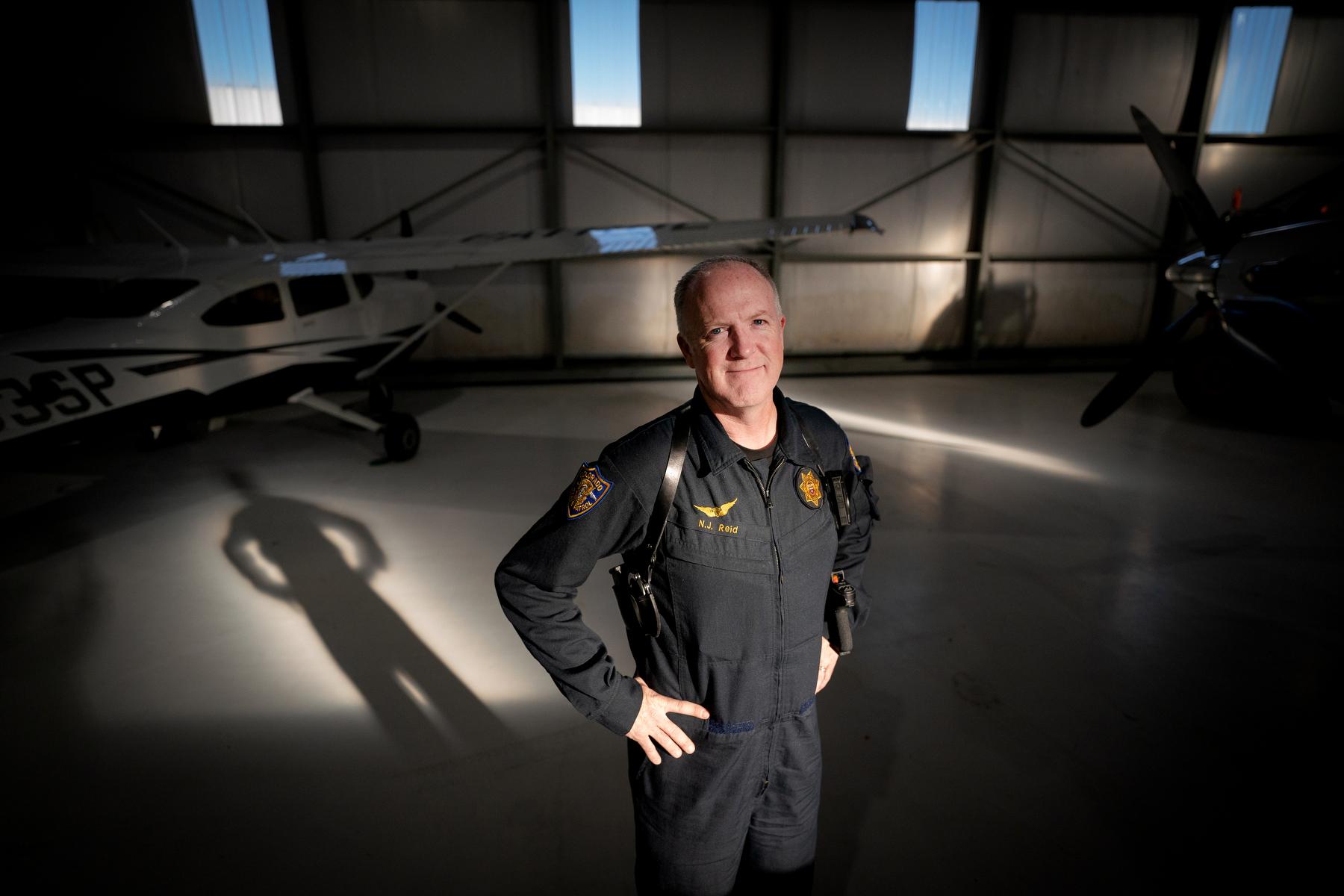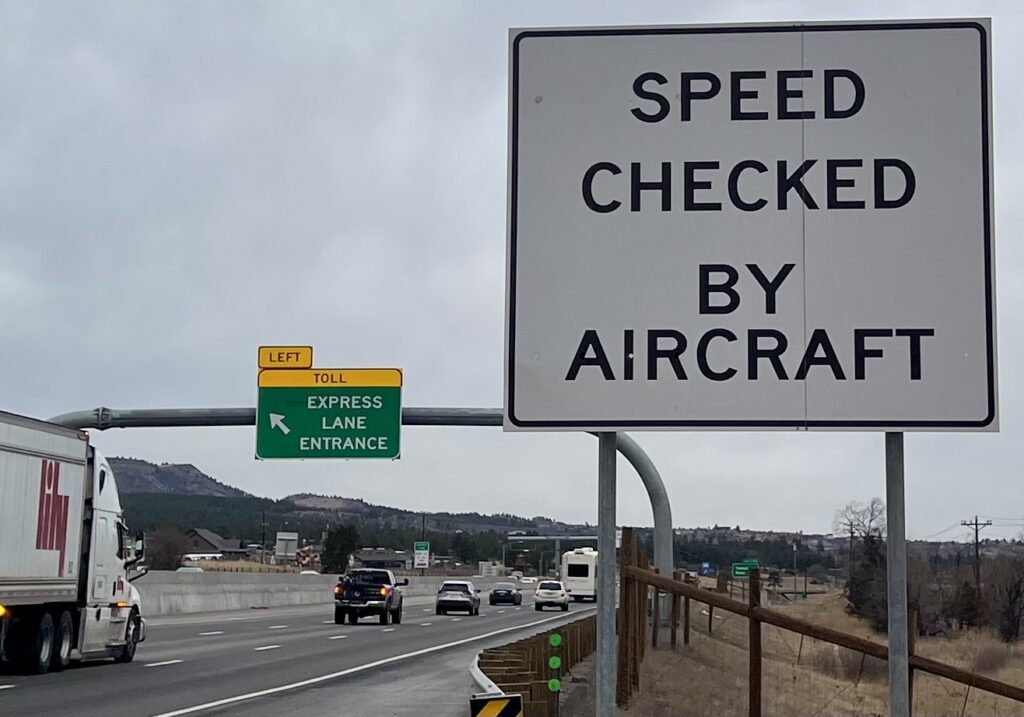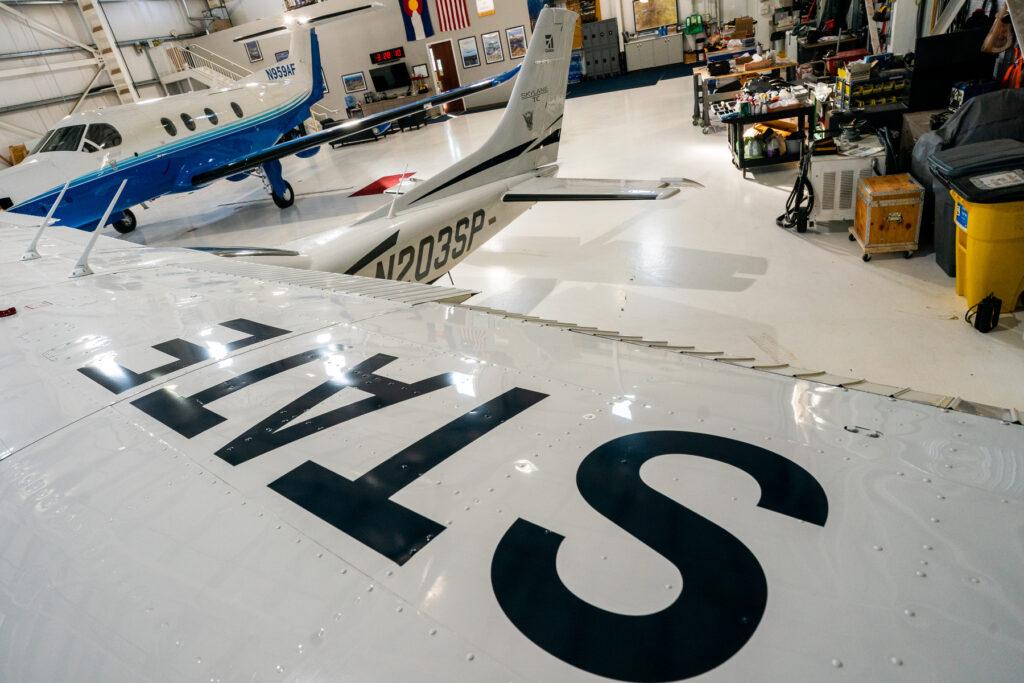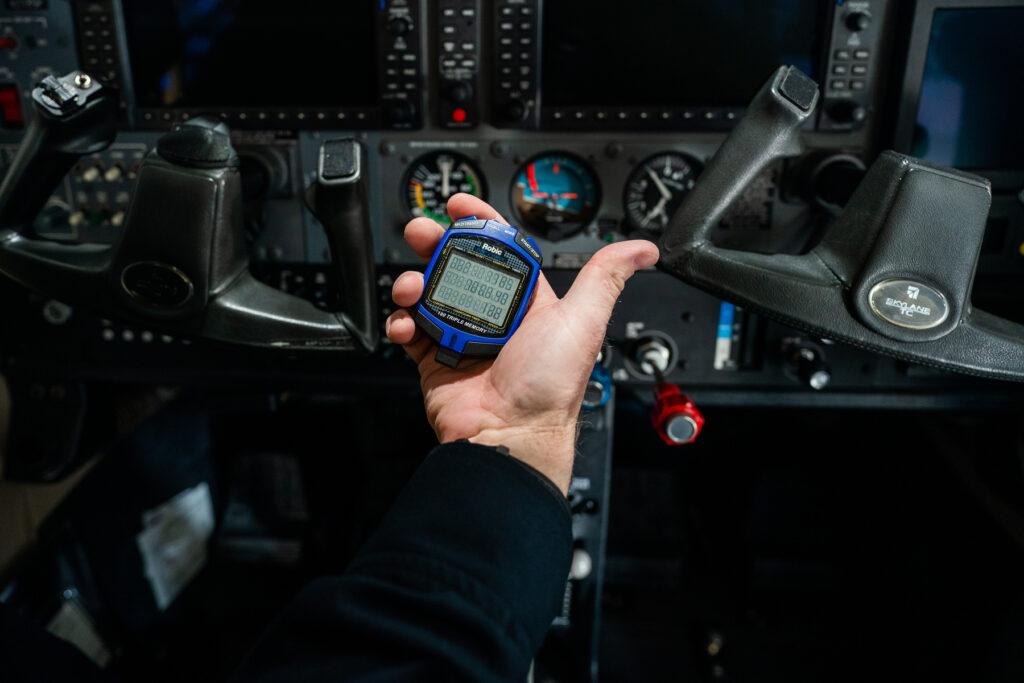
Darren Thornberry drives I-25 a lot from his home in Lafayette towards Monument to get to a relative’s house. Each time, he passes a sign that says “Speed checked by aircraft,” and he wonders if it’s true.
“You never see a plane flying around low enough that you would imagine is trying to clock your speed,” Thornberry said.
Despite skepticism from Thornberry and other drivers, it is true: Colorado State Patrol operates two Cessna 182 planes that periodically fly above the state’s highways, looking for people driving dangerously.
“We've been doing it for about 55 years, using airplanes for speed enforcement and traffic control,” said CSP Trooper Nate Reid, one of the handful of pilots who fly the planes.
Reid said being in the air allows him to flag many more drivers than he could if he were on the side of the road. He estimates it’s common to ticket a couple of dozen drivers in a 2-3 hour window.

The benefits are not just measured in terms of quantity; he also is surprised by the flagrant ways people drive when they think no one is watching.
“The things that I see from the air are insane to me,” Reid said. “People are aware of marked patrol cars — even unmarked patrol cars. And they tend to drive better when they see those types of things. Having a vantage point from the air… people don't know you're there, and they continue to drive the way they drive.”
Driver behavior is not monitored constantly; instead, troopers go up in the planes for shifts of a few hours at a time, and the planes and pilots are not always available, since traffic enforcement is not their only duty.

How it works
Pilots can determine if someone is speeding by using a stopwatch and hash marks painted on the highways.
“It's just old-fashioned math: time over distance. It's a very simple formula,” Reid said.
Pilots coordinate with troopers on the ground to pull people over. The pilots call down to the patrol cars to relay details about when the speeding cars are coming near and should be stopped.
Tickets that originate from aircraft monitoring are always handed out on the scene by the trooper on the ground; they don’t arrive in the mail later, Reid said.

Speed monitoring by aircraft takes place mostly in the Eastern half of the state, though Reid said they have the technology to do it anywhere in Colorado as needed. Doing it in areas that don’t have hash marks painted on the ground requires a second trooper in the airplane with the pilot, who operates a video monitor.
In addition to speeders, troopers look for people driving unsafely in other ways, such as by passing on the shoulder; and for commercial vehicles violating the left lane law, speeding, or driving recklessly.
Your questions about how airplanes monitor speeds
Thornberry and Heather Ruddy of Centennial both wrote to CPR News via Colorado Wonders to ask about the highway signs warning drivers of speed enforcement from the air.
Ruddy hypothesized it might happen by drone, but Reid said they only use the Cessna aircraft.
Ruddy, who has worked in local government, also said the costs and benefits of all public services have to be weighed.
“It seems like a very, very costly thing… to send up an entire aircraft,” she said.
The ultimate goal, Reid said, is about deterrence and voluntary compliance. The signs that alert Coloradans to the possibility that their speeds are monitored from above could deter someone from going a hundred miles an hour or causing a fatal crash.
“We want everybody to think there's an airplane up there all the time,” he said.








